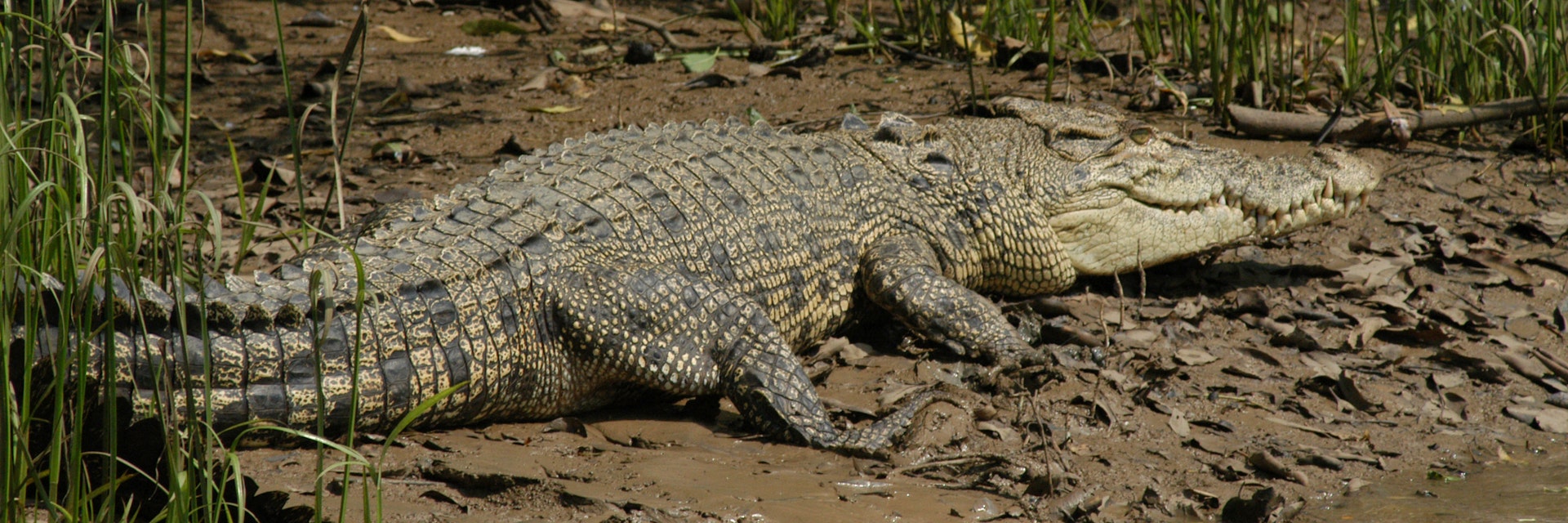Three rivers flow out to sea at Bhitarkanika, forming a tidal maze of muddy creeks and mangroves. This is India’s second-largest mangrove region, and most of the 672-sq-km delta that forms this wonderful sanctuary is a significant biodiversity hot spot. The only way to get around most of the sanctuary is by boat, and the main reason to come is to spot crocodiles and birds (particularly at the heronry site of Bagagahana).
Long-snouted gharials, short squat muggers, and enormous estuarine crocodiles (or ‘salties’) bask on mud flats here through the day, diving into the water for cover as your boat chugs past. One particular 7m beast even made the Guinness World Records some years ago. It’s also worth knowing that this area has the highest concentration of king cobras found anywhere in India, as well as half a dozen other potentially deadly viper species.
The best time to visit is from December to February (note that the sanctuary remains shut for a week in January for the annual crocodile census). You’ll see crocs throughout the year, and may also see monitor lizards, spotted deer, wild boar and all sorts of birds, including eight species of brilliantly coloured kingfishers. Herons arrive in early June and nest until early December, when they move on to Chilika Lake, while raucous open-billed storks have set up a permanent rookery here. A short walk through the mangroves from one of the docks inside the sanctuary leads to a birding tower. There is also a 5km nature walk along one of the islands, though that's best done on weekdays when there are fewer visitors.
The park entrance is hidden within the mud-hut village of Dangamal. Tour boats depart from the pier at Dangamal for 3½-hour safaris in the early morning and then at midday. A single ticket costs ₹250, or you can charter the entire boat for ₹3000.
